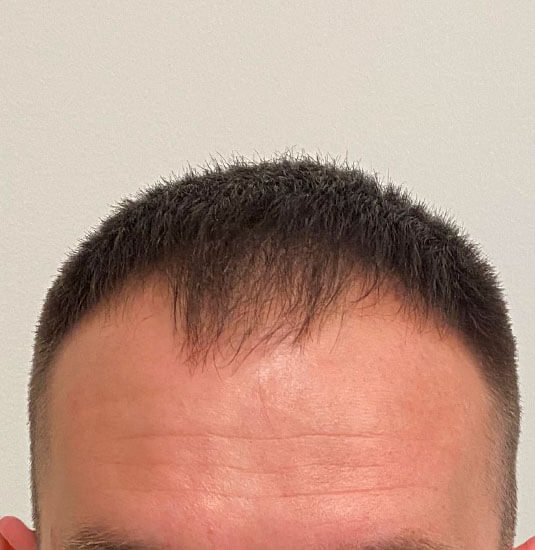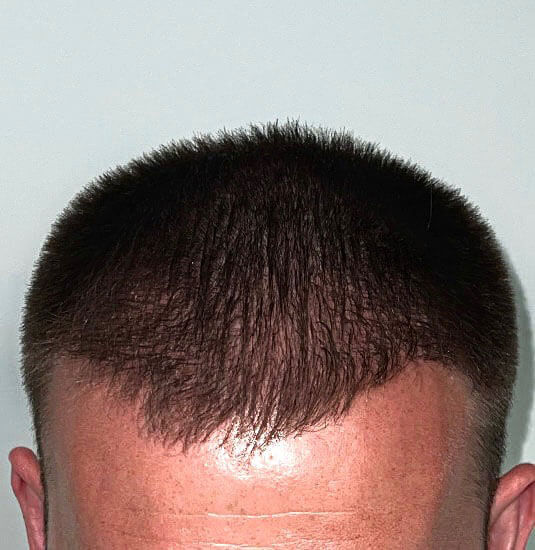At Nashville Hair Doctor we can tell you everything there is to know about modern-day medical hair restoration. Who is a good candidate, how do transplants work, what are the benefits of Follicular Unit Extraction. And we can evaluate your hair loss and treat you at one of our clinics in Nashville, TN, Memphis, TN, or Louisville, KY.
But how did we get here? To fully appreciate how far we’ve come, here is a brief history of the hair transplant over time—from the 19th century to present day.
History of Hair Transplants
Before the Hair Transplant: Creative Cover Ups
Before any form of hair transplant came to fruition, people who were embarrassed about their hair loss had to get creative with their cover ups. Toupées, hats, and wigs were all popular products—especially among middle-aged men. Perhaps the most creative idea in previous centuries was when men employed fashion to cover up their thinning hair – by simply making wigs a part of everyday attire for everyone.
19th Century: Scalp Flaps
One of the earliest forms of hair restoration, the scalp flap, was invented in the 19th century. During this procedure, doctors would take a band of tissue with the original blood supply attached and graft it onto the balding area of the head. If you think that’s a bit brutal and a bit messy, it was!
1930s: Hair Restoration for Burn Victims
During the 1930s, we saw major advancements in hair transplant procedures, fueled by the desire to treat hair loss from burns or other injuries. Modern hair transplant technology has its roots – no pun intended! – in Japan. Japanese doctors were the first to perform groundbreaking work in surgical hair restoration during the 1930s. Dr. Okuda, a dermatologist by training, created a technique to help burn victims and people with scalp injuries. He extracted round sections of hair-bearing scalp and implanted them into the damaged areas where they took root and over time produced new hair.
1940s: World War II Kept Hair Transplants a Secret
In the 1940s this technique was refined by another Japanese dermatologist, Dr. Tamura. He extracted strips of tissue, dissected them into individual grafts, and transplanted these to repair damaged areas.
Had these advances happened at another time in history, they likely would have jump started a new hair transplant industry then and there. But due to the war and Japan’s role in it, these advances remained unknown to Western medicine for another decade.
1950s: The Discovery of “Donor-Dominant” Hair
In 1952 another dermatologist, this time an American, successfully performed the first hair transplant to treat male pattern baldness. His name was Dr. Norman Orentreich, a graduate of the New York University School of Medicine. He was the first to realize that not all hair is equal, that certain areas of scalp lend themselves better than any others as donor areas. Until then, it was not at all clear that the transplanted hair would retain the characteristics of the area where it came from and continue to thrive in its new location. It was possible, so the thinking went, that transplanted hair would fall victim to its new surroundings and fall out just as all the other hair in that area had done.
But no, the donor hair proved resistant to baldness, and this was a huge breakthrough. This idea of “Donor Dominance” allows hair transplants to be nearly-permanent procedures. Because of donor resistance to baldness, the same areas rarely have to be treated more than once.
1970s: Hair Plugs
Without Japan’s isolation from the West during World War II, it is possible that the field of surgical hair restoration would not have suffered such a bad reputation for many years. Why? Because Dr. Orentreich’s technique was not nearly as refined as Dr. Tamura’s. While he is widely viewed as the “father of hair transplants” and deserves credit for his role in identifying donor hair, his cruder approach of cutting out entire sections of scalp led to many aesthetically questionable outcomes.
If you have a daughter, go to her room and see if you can find a doll. When you check out its hairline, you will see that the hair sprouts from the forehead in bunches or “plugs” rather than naturally. This “dolls’ hair” look created by the size used for these hair plugs was a common complaint of the Orentreich “punch graft” method.
1980s: Strip Excisions
Known as follicular unit transplantation (FUT), the strip excision became popular in the 1980s and remained the dominant hair restoration option for the next couple of decades. This method of surgically removing a strip of scalp from the donor area, then dissecting it into individual grafts that can be inserted into the balding areas is still used today.
1990s: The Hair Transplant “Safe Donor Zone”
In the 1990s Walter P. Unger, M.D. discovered the “Safe Donor Zone”, the area at the back of the scalp and part of the sides of the scalp. This is where the most permanent, most resistant-to-hair-loss hairs can be found. This zone is used today in both the strip method and FUE procedures.
2000s: A Huge Leap with Follicular Unit Extraction
Ever since the invention of the Follicular Unit Extraction or FUE method in 2003, it has been possible to transplant individual follicles of hair with thousand of pin-prick-like extractions and insertions. It is virtually impossible to detect a well-performed FUE hair transplant where individual grafts of hair have been artfully placed to create a new hairline and fill in the crown.


2020s and Beyond?
Though today’s techniques—especially the FUE/NeoGraft method—are extremely advanced compared to where hair transplant technology started, we’re certain that we’ll see even more advancements in the years to come. For example, scientists are researching stem cells within hair follicles to see if hair can be multiplied or cloned.
It’s safe to say that we won’t be returning to the days where the problem of hair loss was solved by making wigs the latest fashion! But speaking of wigs, you might enjoy this entertaining story about Elton John and his struggles with hair loss.
We hope that you’ve learned something new from our excursion into the past. And now, back to the future. Would you like to know how many grafts it would take to make your balding areas disappear? Request a free, no-obligation hair transplant quote by uploading your picture right now!

